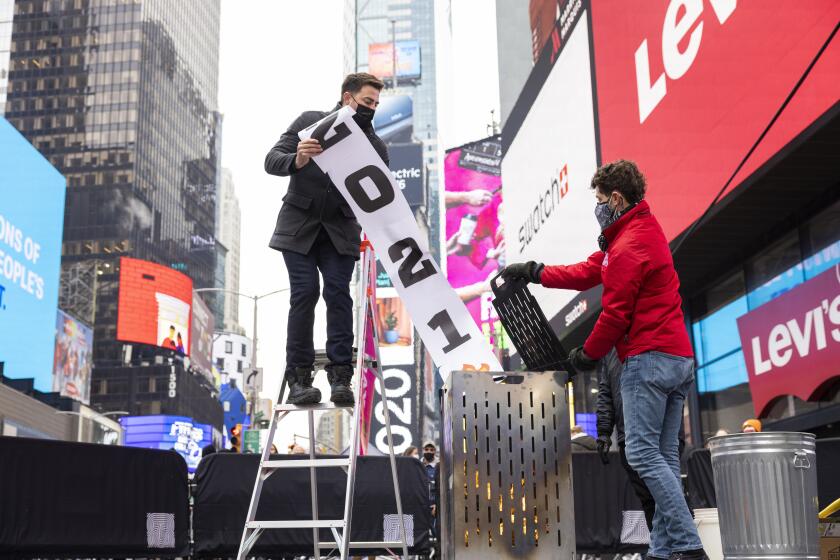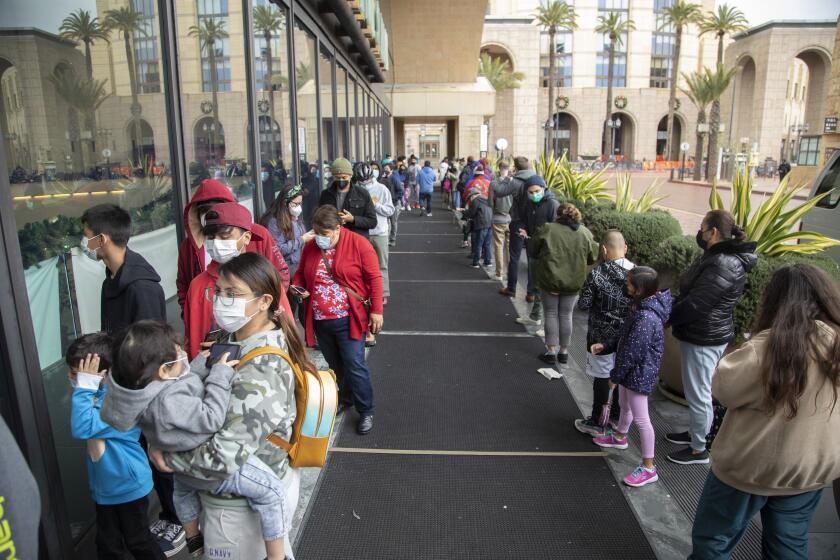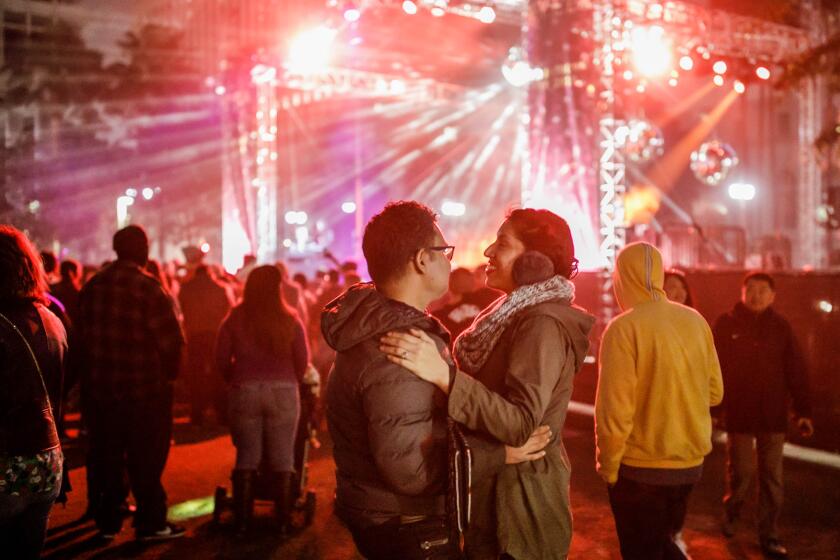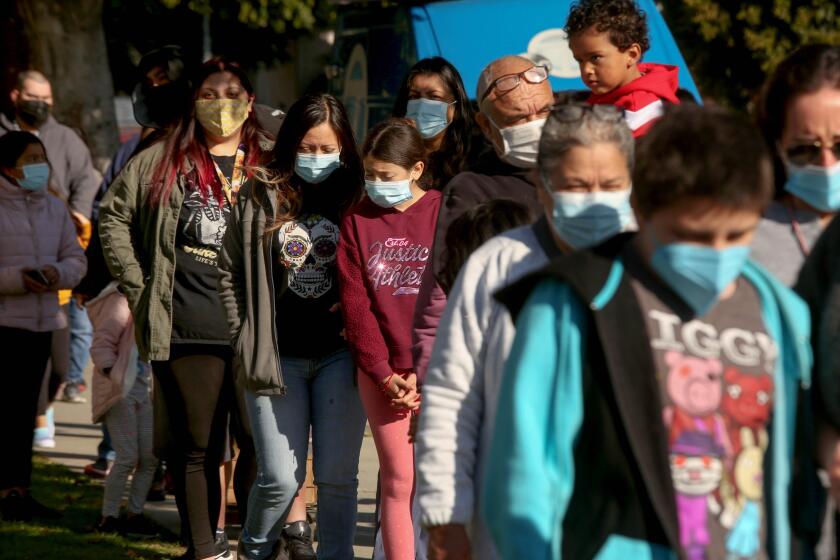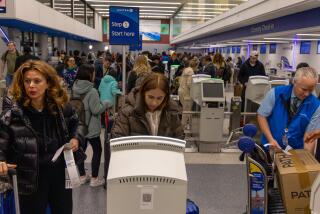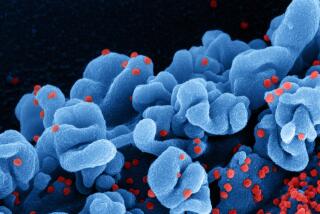Omicronâs spread through one family shows variantâs frightening speed
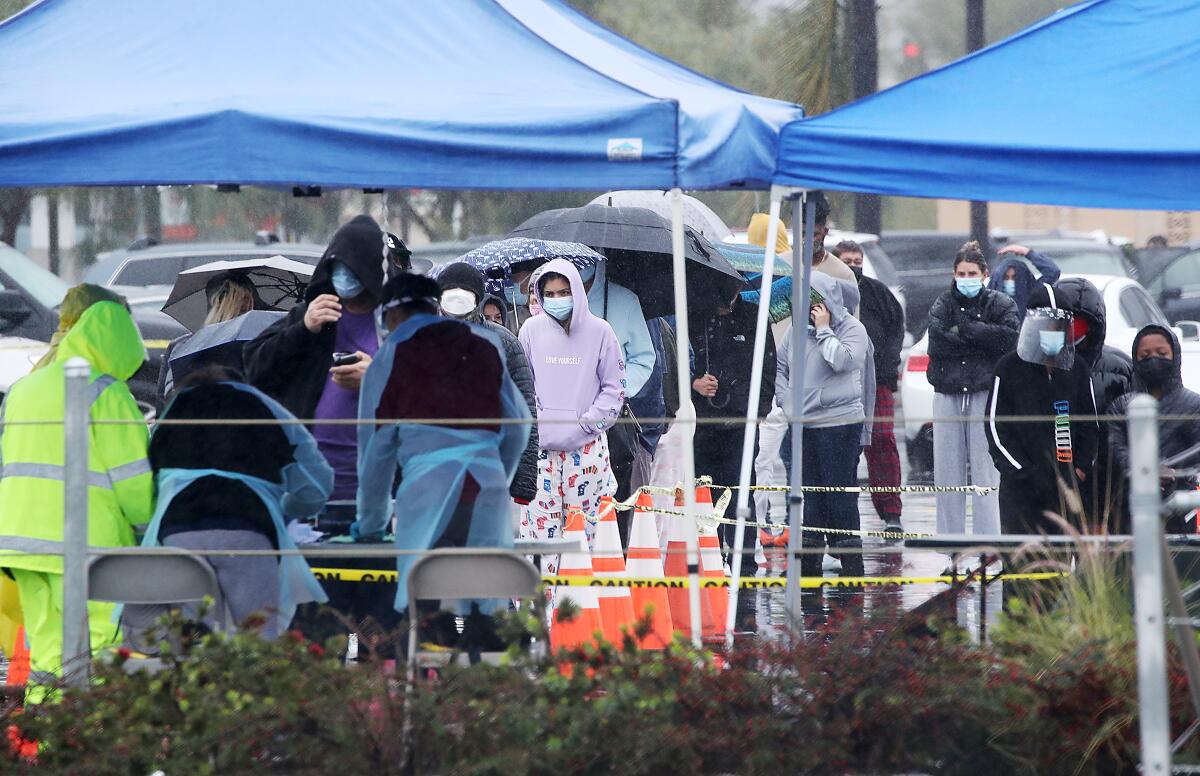
The Omicron variant of the coronavirus is sweeping across California and the nation with unprecedented speed.
Consider:
- Nationwide, the Centers for Disease Control and Prevention reported Wednesday that the average number of daily cases over the last week has climbed beyond 277,000, exceeding the peak of 160,000 during the summer Delta surge and the all-time high of 250,000 reported last winter.
- Los Angeles County on Wednesday reported 16,510 new coronavirus cases, one of the highest single-day totals of the pandemic. Over the last week, public health officials said the test positivity rate has more than doubled from 8.7% to 17.6%.
- Over the last week, California has averaged 20,467 new cases per day, an increase of 228.1% compared with two weeks ago, according to The Timesâ coronavirus tracker. Thatâs higher than at any point during the summer Delta surge.
âThe rapid increase in cases we are seeing across the country is in large part a reflection of the exceptionally transmissible Omicron variant,â Dr. Rochelle Walensky, director of the U.S. Centers for Disease Control and Prevention, said during a briefing.
The warnings come as the nationwide number of newly confirmed COVID-19 infections roared to a record high and hospitalizations in California and elsewhere continue to increase.
Itâs clear that Omicron is highly transmissible. And thereâs also evidence itâs pretty easy for the newest variant to enter a household, undetected.
Spread through one household
The CDC now says most coronavirus transmission occurs early in the illness, generally one to two days before the onset of symptoms and two to three days afterward.
There is also growing evidence that Omicron poses an increased risk for being reinfected with the coronavirus, and that past infection alone, without vaccination and masking, is not enough to guarantee against another COVID-19 illness.
A report published by the CDC recently found that a cluster of Omicron cases resulted after an unvaccinated 48-year-old man from Nebraska â who had been infected with the coronavirus last year â fell ill with COVID-19 again the day before Thanksgiving. The illness occurred four days after the man was at an international conference in Nigeria when, on Nov. 20, he had an encounter, while unmasked, with a person who was coughing while masked.
Soaring COVID-19 cases fueled by the fast-spreading Omicron variant are prompting fresh concerns about end-of-year gatherings.
The Nebraska man tested negative for the coronavirus on Nov. 21 before flying home. He was asymptomatic when he returned home Nov. 23 and came into close contact, unmasked, with members of his household. He started showing symptoms on Nov. 24, and two days later, on Nov. 26 â the day after Thanksgiving â he received a positive rapid coronavirus test.
Everyone in the household fell ill between Nov. 24 and Nov. 26.
Of the six members of the household, who ranged in age from 11 to 48, the man and four others had previously confirmed coronavirus infections and their symptoms from the second infection were similar to or milder than their first infection. (Only one member of the household was vaccinated.)
None of the five people in the household who were reinfected lost their sense of taste or smell in their most recent illness, and only two had a fever. By contrast, during their first infection, most of the five suffered loss of taste and smell, and a fever.
The sixth family member, an unvaccinated person who hadnât had a prior documented coronavirus infection, had the worst symptoms â cough, joint pain, congestion, fever and chills. None of the six needed hospitalization.
The winter spread of coronavirus cases is worsening. Hereâs the latest advice on protecting yourself and those around you.
The report suggests that Omicron might have a shorter incubation period â the time between exposure and he onset of symptoms â and milder symptoms for those who have been vaccinated or previously infected. Previously, the median coronavirus incubation period had been described as five or more days; this report suggests the median incubation period is three days.
The report said itâs not known whether the milder symptoms from Omicron infection are a result of existing immunity or something different from the newest strain.
Fighting Omicron
Officials have not turned to more lockdowns, saying vaccinated and boosted people have strong protection against major illness.
In an effort to slow the spread of the disease, Dr. Anthony Fauci, the White Houseâs top medical advisor, cautioned against large gatherings during the New Yearâs holiday.
âIf your plans are to go to a 40- to 50-person New Yearâs Eve party with all the bells and whistles and everybody hugging and kissing and wishing each other a happy New Year, I would strongly recommend that this year, we do not do that,â he said. âWe feel you should continue to go through with those plans of having a home-related, vaccinated, boosted gathering, with family and close friends who are also vaccinated and boosted.â
A sharp spike in COVID cases, fueled in part by the Omicron variant, prompts health experts to urge revelers to scale back New Yearâs Eve gatherings.
Dr. Robert Kim-Farley, a medical epidemiologist and infectious-disease expert at the UCLA Fielding School of Public Health, also advised against crowded New Yearâs Eve gatherings indoors, especially where people might be singing and dancing in close quarters.
Watching fireworks outside would be a safer activity, but he suggested people still wear masks in crowded outdoor settings.
Kim-Farley suggested that people rethink vacations, such as a getaway trip to Hawaii. While transmission is probably not particularly likely on the flight itself, there is risk during other parts of travel, Kim-Farley said.
âIf you had an essential trip that you felt was important, yes. But if youâve got something thatâs nonessential, it just may be wise to wait a month or two â because we will see this peak and we will see it go back down again,â he said.
Health officials say itâs important to improve the fit of face masks and their filtration, going beyond old, loose, cloth face coverings.
How severe?
Preliminary data continue to show that the Omicron variant of coronavirus results in less severe disease than its Delta counterpart, according to Fauci.
Cases from the U.K. and South Africa showed reduced risk of hospitalizations, Fauci said during a White House briefing Wednesday morning. In recent reports from Scotland, the risk of hospitalization with Omicron was 66% lower than in previous waves.
South Africa reported that among patients who do end up in the hospital, they stayed an average of four days, compared with 8.8 days during the Delta wave.
Currently in the U.S., data suggest that âthe spike in cases is out of proportion to the increase in hospitalization,â Fauci said. As of Tuesday night, the 14-day average shows a 126% increase in cases, and an 11% increase in hospitalizations.
Though the number of COVID-19 patients statewide remains far below the high marks of last winterâs surge, hospitalizations are again rising in California. As of Tuesday, 4,759 coronavirus-positive patients were hospitalized statewide â a nearly 33% increase from a week ago.
More to Read
Sign up for Essential California
The most important California stories and recommendations in your inbox every morning.
You may occasionally receive promotional content from the Los Angeles Times.
